Bangkok, Singapore, and a touch of Tokyo:
In this post, I share tales about street food in Bankok, Scooter tours in Koh Samui, a night in Singapore, and a glimpse of Tokyo from an airport lounge.
One Night in Bangkok
OK, maybe two. But I could not get this song out of my head the whole time we were there!
This information is true to the best of my knowledge and, aside from factual info, the opinions are mine and mine alone. If I offend you, please forgive me!
The Bangkok airport was modern and beautiful. Because we had flown business class, we were able to speed through immigration- this was an unexpected perk. Americans do not need a visa for stays of 30 days or less at the time of publication.
Our guide, Mr. Phanom, a soft-spoken man who wore all black and stood stick-straight. He greeted us with his hands in prayer position, giving a small bow. This is a typical Thai greeting called a “Wai.” He escorted us to our driver, who was waiting in a nice van.
I did not realize they drove on the left side of the road in Thailand, but they do. Thailand was never colonized. They drive on the left because that is how they learned, and their first cars were configured for left-side driving. The degree of chaos here was significantly less than in Hanoi, there were fewer scooters, and people paid more attention to the rules of the road.
One of the first things we learned was that Thailand was a country in mourning. Their king died in October of 2016, and a mourning period of one year followed. Every Thai citizen was to wear black, and each one was supposed to make the pilgrimage to see his body during that year.
King Rama IX, or King Bhumibol Adulyadej, reigned for 70 years and died at age 88. He was beloved and respected by the Thai people. Large portraits were all over the city, and televisions broadcast stories of how amazing he was. It all felt a little odd and propaganda-ish to us, but what do we know?
Riva Surya Bangkok
Our hotel was directly on the Chao Phraya River. Mr. Phanom dropped us off at our hotel and we were on our own for the evening. Our room at Riva Surya Bangkok was huge and had a balcony overlooking the pool and river. The decor of the room, and the entire hotel, was warm in shades of tan, yellow, and burgundy. Carved wood in warm oak tones graced many of the walls, and ornate glass provided accents. The open-air lobby had views of the infinity pool, which in turn overlooked the river.
We only had two nights, Sunday and Monday. Chinatown shuts down on Mondays (or at least, it did in 2017), so we rallied and dragged ourselves out to explore. We had to experience a tuk tuk, as we never had before and they are such a quintessential part of visiting Bangkok. So, we called one to pick us up at our hotel and take us to Chinatown. We were glad we did!
A tuk-tuk is a three-wheeled motorized vehicle, sort of like a motorized cyclo. In Bangkok, they tricked them out with lights, bling, and music. We boarded our ride and were whisked away. It felt like we were speeding directly into oncoming traffic!
Exploring Bangkok’s Chinatown
Chinatown in Bangkok was exactly as you see it in the movies (I am thinking “The Hangover, part II“). Every square inch is filled with advertisements, storefronts, and signs. Vertical and horizontal signs with Chinese lettering soar skyward in shades of red and yellow. Smaller signs have Thai writing, which is pretty and artistic, and the words are very long… The main drag was lined with food stalls peddling everything from shark fin or bird’s nest soup to durian to insect kabobs. Dried squid and desiccated ducks hung in windows.
We had crab curry at a crowded corner cafe, and it was delicious! We also had shrimp in curry sauce that we had to shell and behead. They do this in lots of Asian countries, and I am not a fan- I don’t like to get my hands dirty. An old vagrant came along and took our shrimp heads.
As we walked along checking out the food stalls, an American couple offered us their Durian. Durian is a very polarizing fruit. It can weigh up to 7 pounds and is covered in spikes. It has a VERY pungent smell, even when it is intact. I think it smells kind of like feet, and it has been described as smelling like vomit, garlic, blue cheese, etc.
Apparently, the stronger durian smells, the better it tastes! It is banned in many hotels and public transportation in many countries because of the smell. This particular couple did not enjoy theirs, and I had never tried it. So, I accepted. I was not really a fan either… it was creamy and sweet, but a bit mushy and not fibrous at all. There was an undercurrent of a more savory, almost rancid taste. I was left with a film on my tongue, which I didn’t enjoy.
We had mango sticky rice with coconut milk, which was delicious, and helped my taste buds forget the durian. I tried a grasshopper and a grubworm. The grasshopper was large and juicy. I selected my victim, and the vendor plucked his legs off, sprayed him with soy sauce, and roasted him up! It was not bad! Like a super crunchy potato chip with a squishy middle. Like eating shrimp with the shell on. Insects are a great source of protein, and they are plentiful and renewable. Like I said, you eat what you have access to. According to the American Entomological Society, there are over 10 Quintillion insects in the world. Eat up!
We hailed a tuk-tuk for the ride back to the hotel and had a fun, whimsical time. We pulled up next to another tuk-tuk carrying a similar couple, and Vuong yelled “race you for pink slips!” and we were off! Music blasting, lights flashing, we raced from light to light.
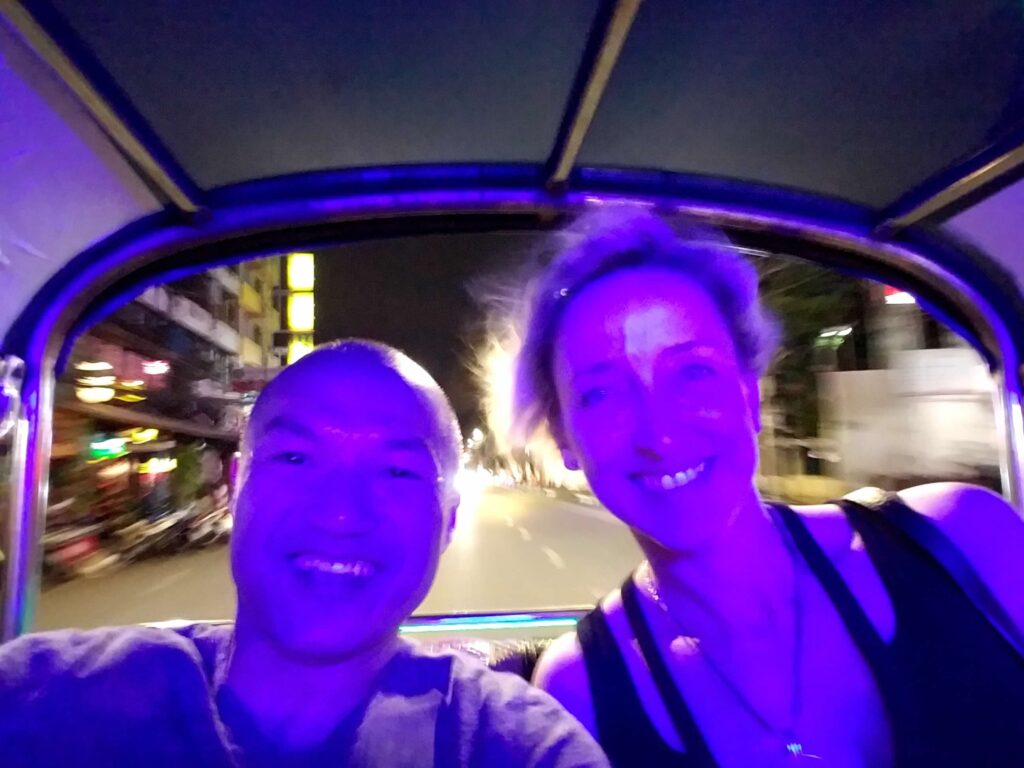
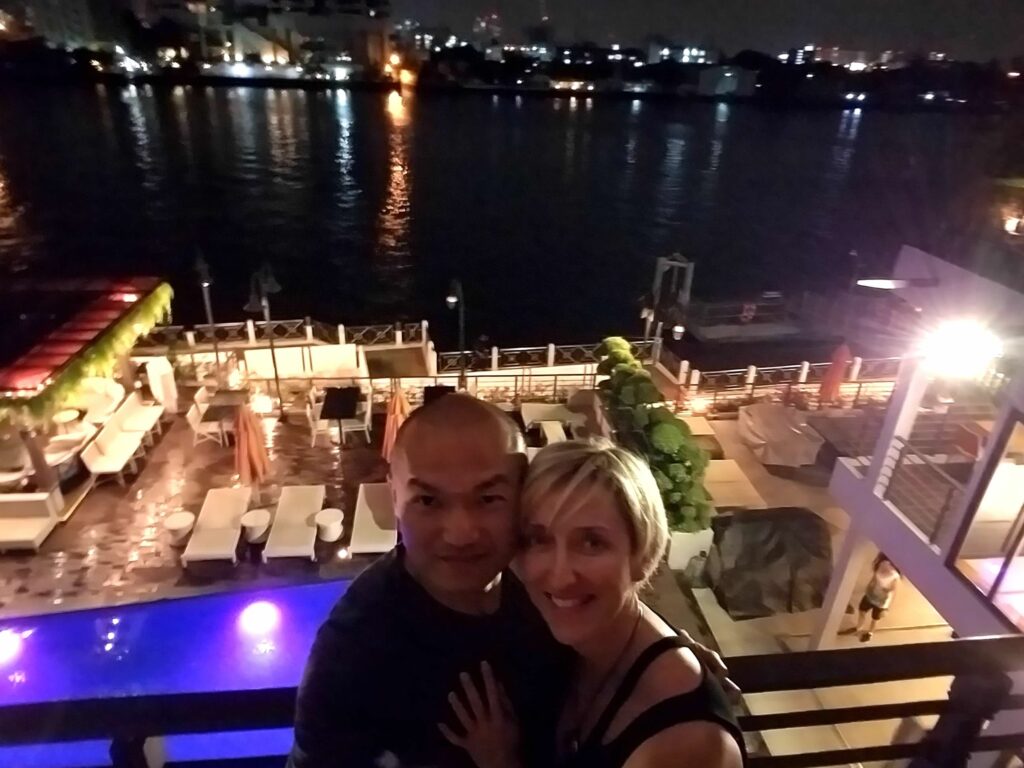
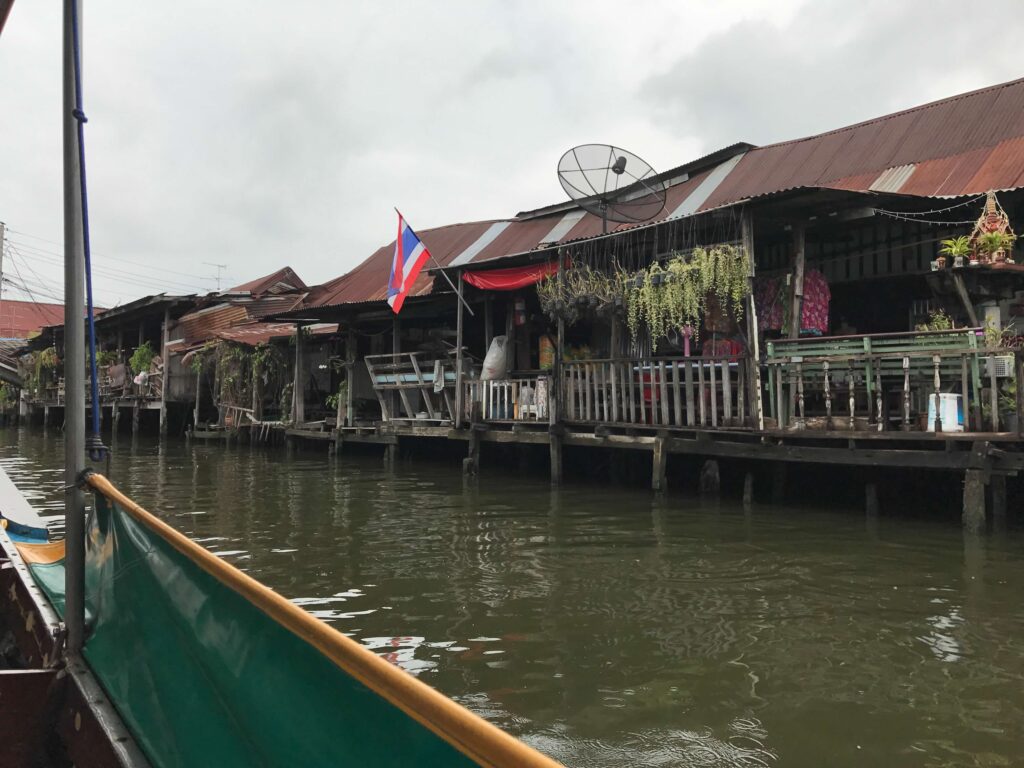
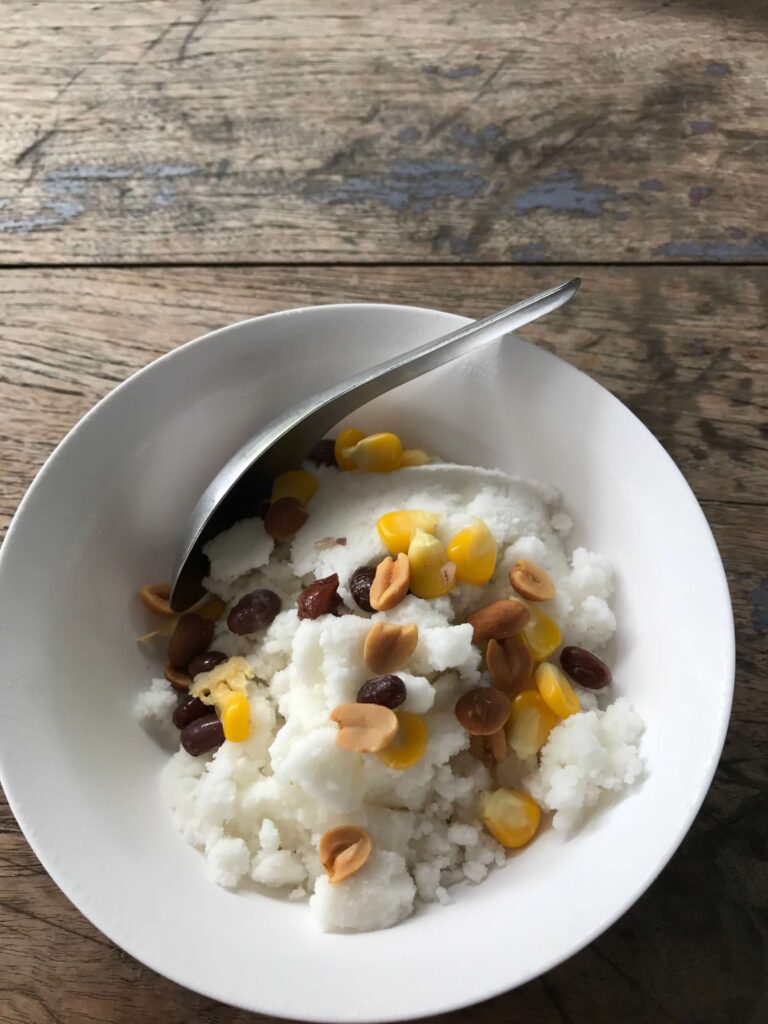
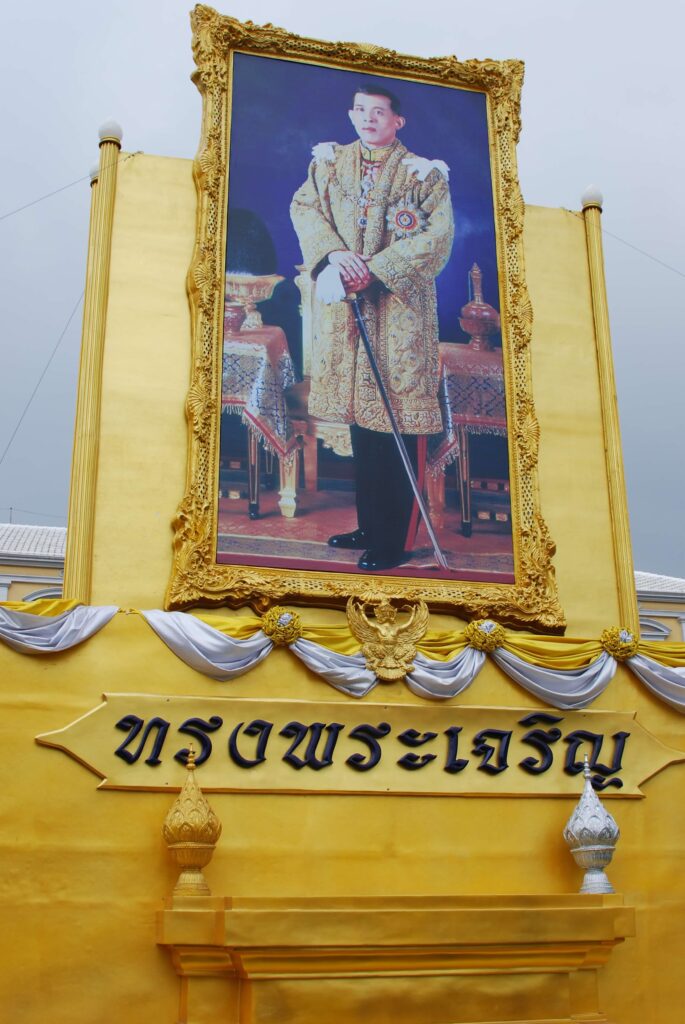
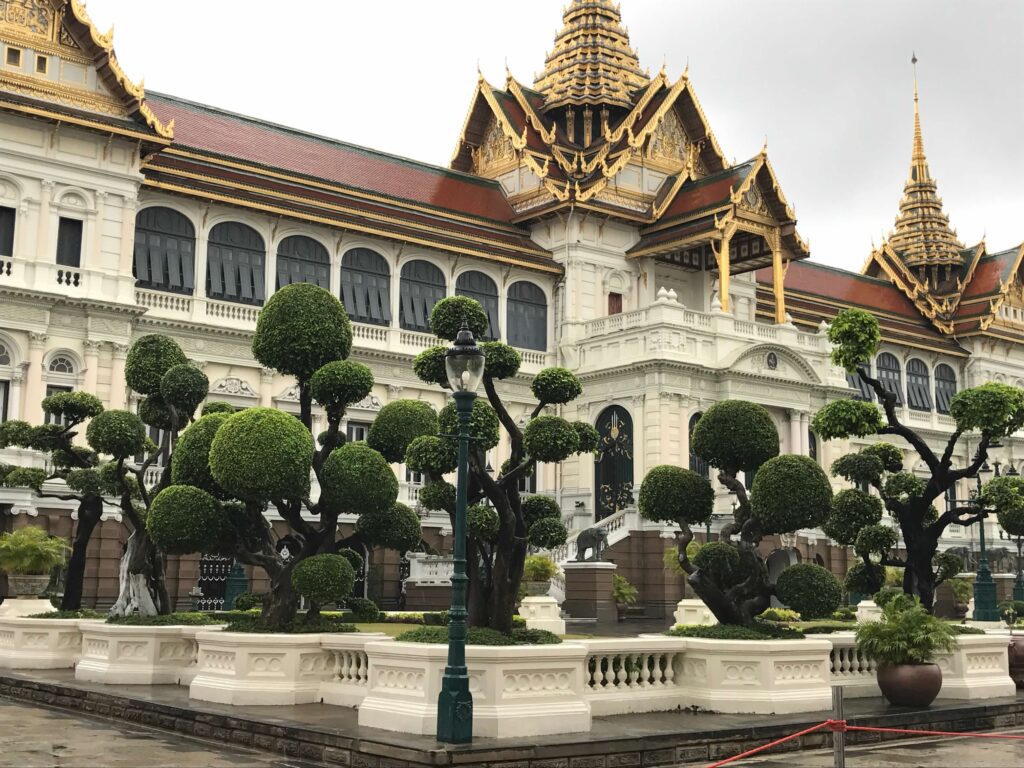
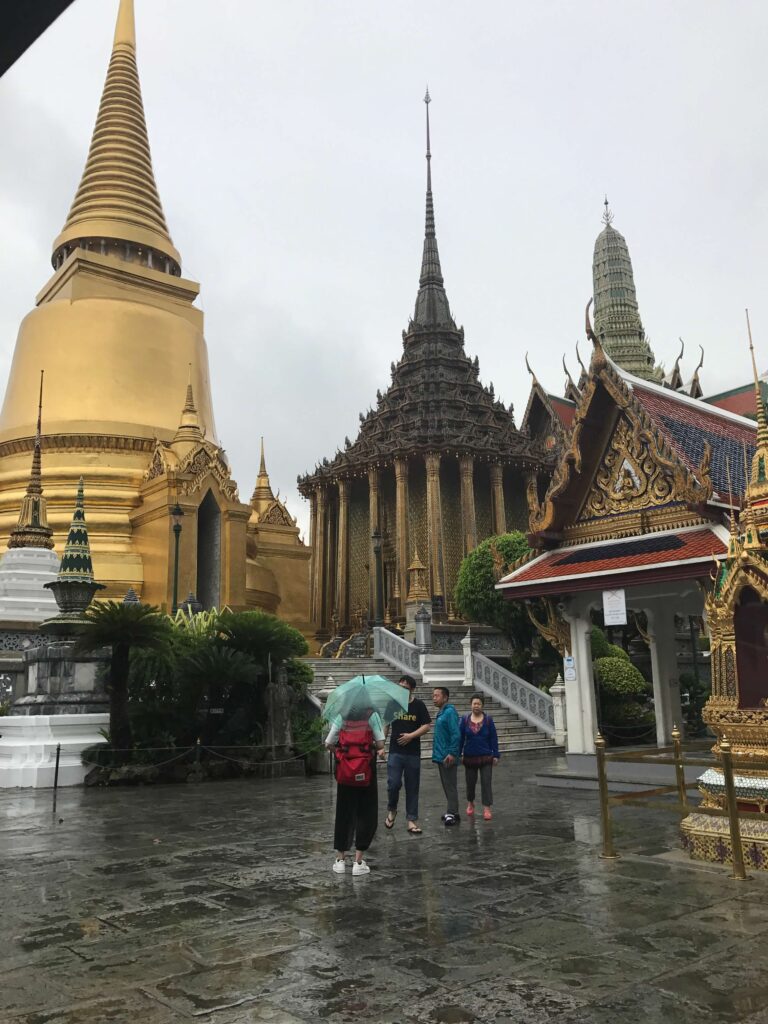
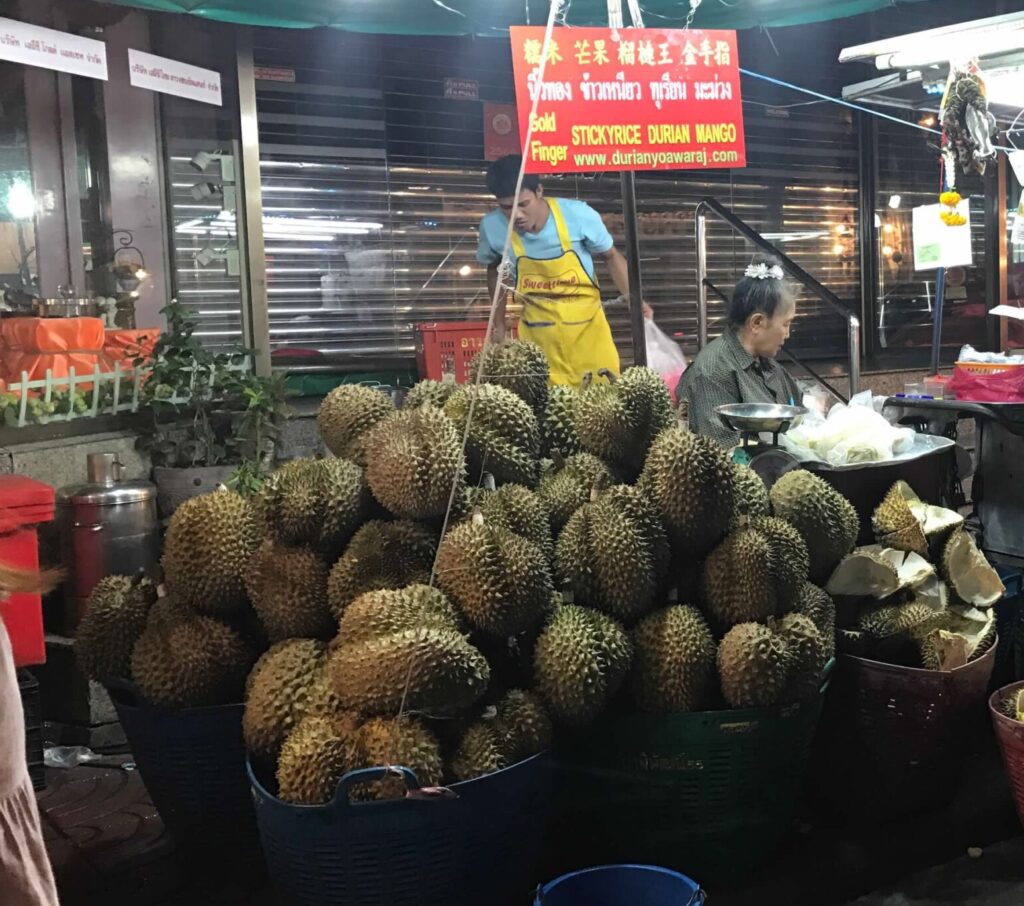
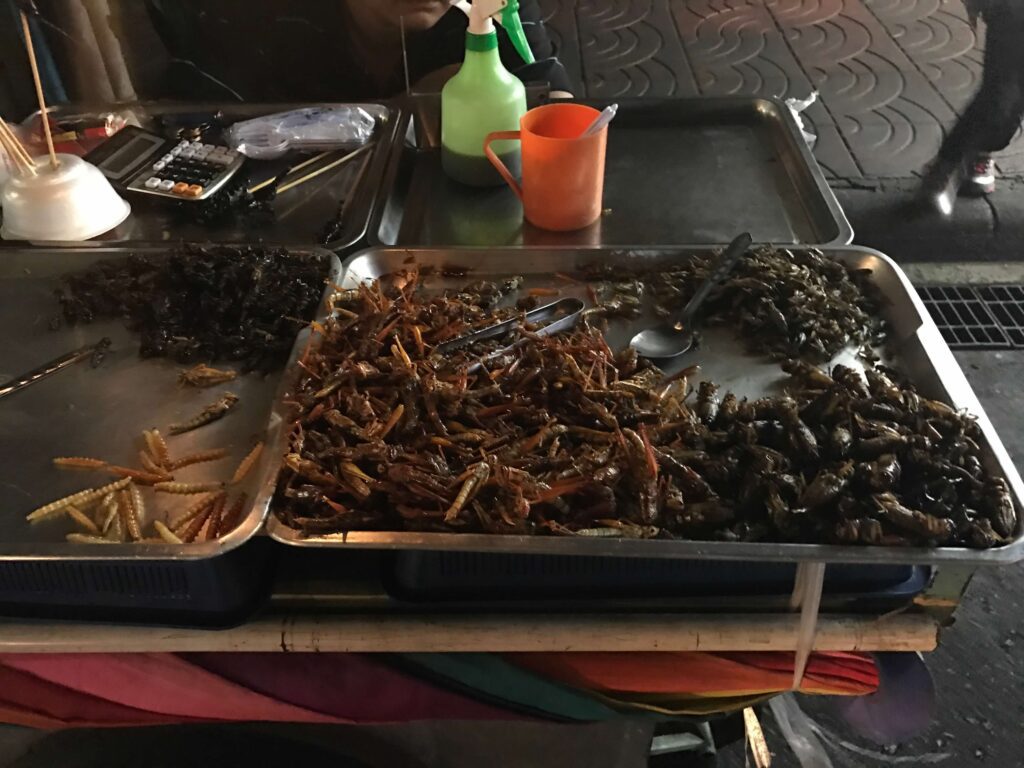
City and Temple Tour
The Grand Palace
The next day, a black-clad Mr. Phanom showed us the major sites and temples of Bangkok. The Grand Palace is the largest and most important temple complex in Bangkok. It was built in 1782 and contains the Royal Palace as well as the Temple of the Emerald Buddha, or Wat Phra Kaew. This little Buddha was carved out of a block of Jasper and sits high in a place of honor in a very ornate temple. The King (or one of his designees) changes the Buddha’s outfit with each season.
Dress codes are strictly enforced here- cover knees and shoulders, and wear or bring socks. You will need to remove your shoes outside the temple, and no bare feet! The Temple of the Emerald Buddha is one building among many- there are smaller chapels and a gallery with two very large demon guardians. There are stupas, or chedis, which are large conical structures that often house relics or human remains. The largest one here is covered in gold-colored tiles. Many of the chedis, temples, and statues are covered in colorful, hand-painted tiles. We saw a sign that said, “The Buddha is for respect, not decoration.”
The Royal Palace itself was a long, white building more British in style, with a roof more in keeping with the architecture of the temples. Here, the King’s body lay in state, awaiting mourners to pay respects.
Wat Pho
Nearby, we visited Wat Phra Chetuphon Wimon Mangkhalaram Rajwaramahawihan, or Wat Pho (I’m glad it has a nickname). This is another large temple complex and the site of the first public university in Thailand. Thai massage originated here and is still taught there today. Onsite are cloisters, temples, and courtyards for meditation and reflection.
The main hall houses the Reclining Buddha. This guy is huuuuge! at 46 meters long and 15 meters high, he is one of the largest Buddhas in Thailand. His FEET are over 4 meters long, and the toes strangely uniform. On their soles are 8 “auspicious symbols.” There are 108 bowls in the hallway, representing the “auspicious characters” of Buddha. It is customary to place a coin in each for good luck, but if you don’t believe this, know that the money goes toward helping the monks maintain the temple complex. This was a challenge on The Amazing Race, Season 1.
The characters and symbols are called auspicious because they are said to bring about good fortune and luck, and the 108 auspicious characters represent characteristics that brought the Buddha to perfection.
Wat Arun
We took a quick ferry ride across the river to the Temple of the Rising Sun, Wat Arun Ratchawararam Ratchawaramahawihan. The buildings in this temple complex are covered in white porcelain tiles which have flowers painted on them. The overall effect is a distinctive lighter appearance, which causes the temples to shine in the morning sun. There is one major prang or tower. It was under renovation when we visited, but it was still stunning.
The Canals of Bangkok
Back in the day (think 18th century), the canals were the principal transportation routes in Bangkok. AKA Khlongs, the canals gave Bangkok the nickname “Venice of the East.” Most of the canals have been filled in, but some still exist. We had a tour of some of the canals on a long-tail boat. These boats are carved from a single tree and are adorned with floral arrangements to honor those trees. They are colorfully painted and decorated, with brightly-hued canopies. The boats are powered by car engines attached to their sterns.
Back then, homes, temples, and businesses were built facing the canals, as those were the main streets of town. We passed by floating shops, and saw giant monitor lizards, and children swimming in the murky waters. We felt like we were floating through the suburbs, with homes whose occupants were going about their daily lives. Cleaning, Doing laundry, cooking… Many of the neighborhoods had stone staircases going into the canals, and children hung out on these steps and fished or swam. Many of the homes were ramshackle, with porches collapsing into the water and laundry hanging out to dry. Every few houses, there were green spaces with mangroves, bamboo, and fruit trees. Some areas had fancy houses and temples.
City Pillar
Many cities in Thailand have a “city pillar,” which is supposed to symbolize the spiritual center of a city. Bangkok has one of the oldest and most important city pillars. Citizens are meant to come here and pay respect to the pillar and therefore the spirits of the city. They can make offerings and participate in rituals that are said to bring good luck, prosperity, success, and fortune.
The City Pillar complex in Bangkok has the actual shrine and then a separate pagoda with several different methods of fortune telling and means to obtain good luck. You can add oil to the candles, place gold leaf on the Buddha, or shake a container of sticks and make a wish. If you do the last, you compare the number on your stick to a board and read what your answer is.
Lady Boys and Night Markets
Mr. Phanom’s tour included a few stops at food stalls. One of our favorite discoveries in Bangkok was their coconut ice cream! Served in a coconut or a little cup, it was topped with peanuts, corn, and red beans. Sounds odd but it was delicious! Other foods we had were a young papaya salad, a whole deep-fried fish, and bok choy with pork skin.
We took a ferry to a night market called “Asiatique,” which was clean and brightly lit- more like a mall food court than a typical night market. But there were tons of locals and a plethora of food selections. After watching two tiny Thai girls eat their weight in food (while we shared a red curry chicken dish), we caught a ladyboy show at the Calypso Cabaret. The venue reminded me of the Moulin Rouge in Paris, and the show was not entirely dissimilar. It was classy and clean- the only difference between this and, say a “Legends” show in Las Vegas, was that the female performers were lip-syncing males.
The Thai are way ahead of the US in understanding and accepting non-binary-gendered people. They have long recognized a third gender group sometimes called “Kathoey,” but with several other names as well. The names are roughly translated to English as “ladyboy,” a “second type of man,” or a “second type of woman.” It encompasses gay men, transgender people, and often really effeminate guys as well. The gender has been legally recognized since 2015 and as many as 3 gender reassignment surgeries are performed in Thailand per week.
We took a tuk-tuk back to our hotel and walked across the street to the Khao San Night Market. Named after its street, there are cheap guesthouses and lots of food stalls and bars where you can get cheap food and drink. It obviously follows that the place would be packed with college kids and backpackers. We enjoyed the festive, fun atmosphere. We sat for a few minutes and listened to a Thai Reggae band. After a good night’s sleep, we went back to Khao San Road for a breakfast of Pad Thai and fried rice.
Koh Samui, Thailand- A Tropical Paradise
Chura Samui
After an uneventful flight on Bangkok Airways, our resort shuttle picked us up and took us to Chura Samui. We had upgraded to a suite and were blown away by our accommodation. We had a private one-bedroom oceanfront villa, #101! The villa had modern Asian decor, with concrete floors and countertops, teak wood accents, and walls made up mostly of glass sliding doors.
The bed was outfitted in white linens, had tiny perfectly formed frangipani blossoms on the pillows, and was surrounded by white mosquito netting. A mosquito curl sat in the corner. There was a separate living area with a couch, TV, and mini-kitchen. The bathroom was amazing! It had double sinks, a nice shower, and a bathtub which was open to the outside. Above the tub was a rain showered and behind it, a frangipani tree dropped its blossoms into the tub.
It was raining, so we opened up the curtains and windows and enjoyed the sounds, smells, and sight of the deluge. It was glorious.
We headed out in the rain to explore. We walked down the beach, since the road was flooded, and ended up in an open-air restaurant called “Your Place.” It looked kinda like a Señor Frogs that had seen better days, but the food was on point. We had Massaman curry fish and Panang curry shrimp.
We spent the next five days in this luxurious resort, venturing out daily and nightly to explore. The hotel restaurant had a daily breakfast buffet. One night, they arranged a romantic dinner for us on the beach, under the stars.
The town of Chaweng was a short taxi ride away- the local taxis are pick-up trucks with covered beds outfitted with benches for passengers. They are known as “Songthaews.” You typically just flag them down and pay the driver a few Thai Baht.
We shopped, had cheap Thai massages, and ate lots of delicious local cuisine. We visited an ice bar, which was a room dressed up like an igloo where we donned fuzzy onesies and had shots. Ladyboys provided nightly entertainment at one club, and Indonesian rock band Naqita rocked the Hard Rock Cafe at another.
Tailor-made Suits
We found a tailor who offered affordable, bespoke suits with a three-day turnaround time! Vuong went to town! For $1300, he got 3 three-piece suits, 4 shirts, and a which wool coat. And the whole experience was a lot of fun with David and his associates. Go see David if you are in Chaweng Beach! https://www.facebook.com/ClassicInternationalSuits
Muay Thai
Trucks with advertisements for Muay Thai boxing cruised up and down Chaweng beach’s Main Street, blasting AC/DC and “tonight, tonight, tonight, at the coliseum!” like the WWF had come to town! Of course, we had to check it out. At the Phetch Buncha Coliseum, we were two of the few tourists and we sprung for ringside seats so we could be close to the action! There were six matches, and each started with respectful, low bows, and a ritual of bows to every corner of the ring. The fighters wore swatches of their mothers’ sarongs on their muscled, brown arms. It was a fun experience, highly recommend it!
Scooter Explorations
We rented a scooter from a German lady across the street from our resort for about 200 baht, or $5 USD a day! We really enjoy renting scooters in places that aren’t too chaotic. It gives us the freedom to explore a bit and get off the beaten path. Vuong is a very good scooter driver, and I ride a pillion.
We headed out to explore and found a quaint little town called Fisherman’s Village at Bophut Beach. This town was less crowded than Chaweng Beach and had upscale local shops, restaurants, and bars. Fresh seafood was served everywhere, along with fresh fruits and vegetables. We enjoyed lunch on the beach and booked a snorkel/kayak trip for the following day.
We found a ramshackle zoo of sorts called “Samui Crocodile Farm.” Here, men played with crocodiles- one put his head inside the mouth! We watched the snake show, in which a 7-fingered man taunted cobras. He was a flavor of snake charmer, entrancing the animals with his rhythmic movements and music. As the grand finale, this dude brings out a 3.5 meter (that is about 11 feet) long KING COBRA! The cobra was huge, fat, and girthy. These snakes can stand up to about one-third of their body length and strike up to half!
This cannibalistic snake rarely bites humans unless you are taunting it (like this guy). It is called the “king cobra” because it is king of other snakes and they are its preferred cuisine! Our snake charmer had been bitten by cobras seven times and had sacrificed several fingers to his craft.
Snorkel Trip
A truck picked us up the next morning for our snorkel trip, and we completed our circumnavigation of the island. We boarded our long boat and explored a few outlying islands, dropping anchor near one. This was our base of operations for kayaking. We launched our two-person kayak and paddled out past the breakers. Two Chinese girls in our group boarded their kayak and started to paddle out as well- backward! We had a laugh at their expense, then it started to rain!
It was surreal. Floating in the warm sea as cool rain fell on our bodies was blissful! At one point, we could not see the island because of the rain. This was a top travel experience for me!
The rain cleared quickly and we moved on to our snorkel spot near one of the other islands. I have never been in the midst of so many fish! There were hundreds of them around us, bumping into us and nibbling on our toes. I felt like one of them!
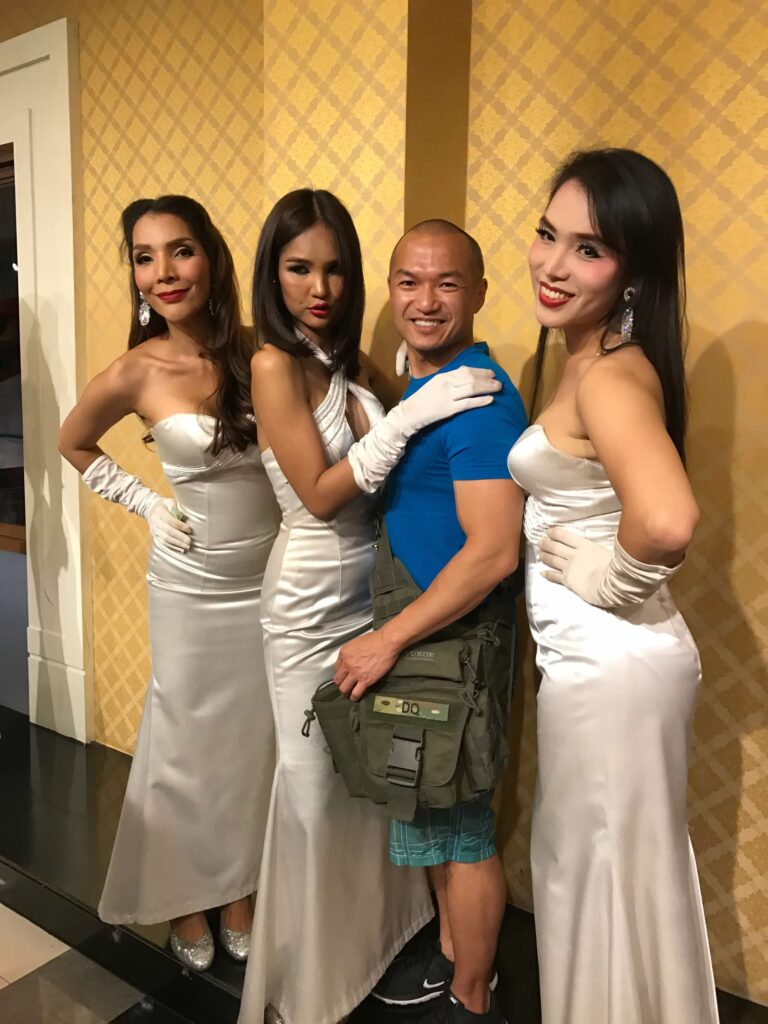
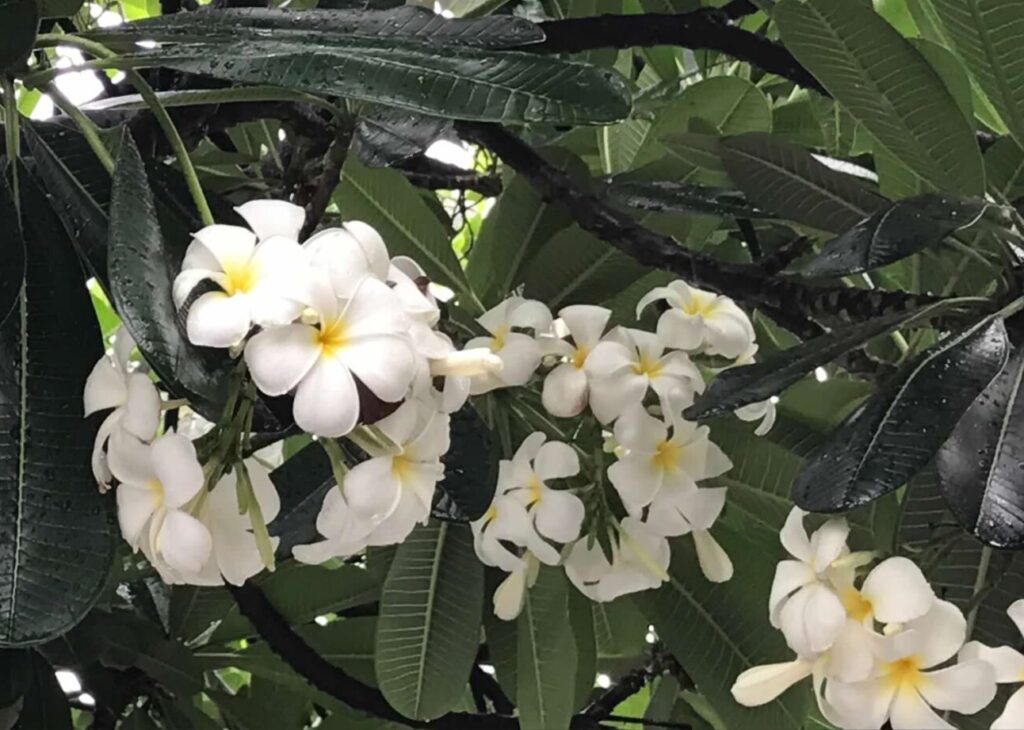
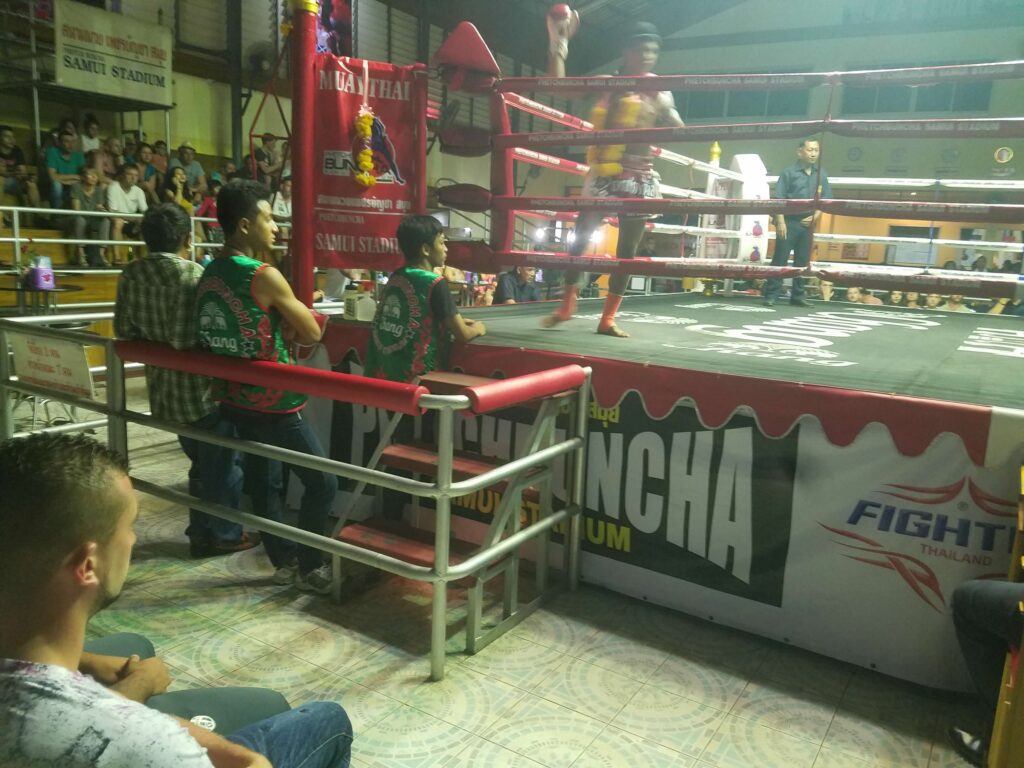
Singapore
Too soon, our island getaway came to an end. This flight was business class on Singapore Airlines from Bangkok to Singapore, and it was still amazing. We caught a taxi to the Uber-chic Sofitel in the Central Business District, located right across the street from one of the main hawker centers, Lau Pa Sat. This was a very nice boutique hotel, and the location could not be beat. That evening, we ventured out to Chinatown, which is a bustling center of activity filled with delicious food. This was like no Chinatown we had ever visited. It reminded me of Fremont Street in Las Vegas but without the casinos and crazy people. Sparkling clean and well-lit even at 10:00 at night, it was lovely and safe.
Anthony Bourdain, God rest his soul, raved about the Singaporean chili crab. We chose our own from a stall in the center of the walkway and said a little thank you as he was plucked from his watery home. We were given latex gloves and a variety of tools, and the crab was placed in front of us. This is a hard-shelled crab smothered in sweet, spicy chili sauce. It was a pain in the butt to eat and there was not a ton of meat, but the meat we had was tender and delicious.
We walked back toward our hotel. Singapore is a very clean, safe city, due to strict laws carrying harsh penalties and stifled individual freedoms. Caning is still a method of punishment here, and illicit drugs carry the threat of long-term imprisonment and even death. Chewing gum is illegal, and you can be arrested for annoying others with your musical instrument or singing vulgar song lyrics in public. It is a strange place, without the grit that is the reality of many Southeast Asian countries, but it maintains its unique culture. This culture, exemplified (to us) by the food, shows Malaysian, Indian, and Chinese influence. It is a great introduction to Asia, but feels a bit sterile and Disney-ish after a while.
I was surprised to learn that Singapore has been around since the 14th century in some form, as it feels so new and squeaky clean. It has been a British colony, has been occupied by Japan, and was part of Malaysia for a period of time. Singapore as we know it has been around since it gained its independence after being expelled from Malaysia in 1965. Now, it is one of the richest (and most expensive to live in) countries in the world.
One of the iconic images of Singapore is Supertree Grove at Gardens by the Bay. This amazing park is worth visiting during the day and at night. At night, the trees are illuminated in neon colors, and there are uplights scattered around the park. You can catch a light and music show twice per evening. Dinosaur statues lurk around many corners. There was an otherworldly, Avatar-like feel to the whole place, and it was quite romantic and magical.
The trees are made of concrete cores with metal scaffolding. Plants cover the metal scaffolding, and the canopies contain solar panels and photovoltaic cells to generate energy for the park. They even use horticultural waste to generate more energy. Read about this in more detail here.
After our nighttime visit to Supertree Grove, we grabbed some satay at the Lau Pa Sat hawker center.
The next day, we started our day with breakfast of oyster omelets and chicken and pork with noodles at Lau Pa Sat. We then had a walking tour with Jeffrey Foo. We visited the Buddha Tooth Relic Temple, a temple in Chinatown built to house a relic that is said to be Buddha’s tooth. This large temple was built in the Chinese Buddhist style and is massive. There are innumerable Buddha statues, as well as an entire museum showcasing sculptures, paintings, and textiles from all over Asia. The tooth itself is over 3 inches long, which is a bit large for a human tooth.
We visited the Parliament House and learned a bit about the government. Singapore has an elected President and Prime Minister, and much power rests in the hands of the ruling party. There is very strict government rules, and penalties are harsh for stepping out of line.
Our tour took us back to Gardens by the Bay, where we saw the Supertrees during the day and walked the elevated walkway between them. The Cloud Forest and Flower Dome are also located at Gardens by the Bay. This complex houses one of the world’s tallest indoor waterfalls and trees and plants from around the world.
We visited the Marina Bay Sands, whose infinity pool and club were featured in the movie Crazy Rich Asians, walked by the river, and saw the Mer Lion. We had peanut and red bean pancakes with iced coffee at Maxwell Center, another famous hawker center. Lunch was at the world’s cheapest Michelin Star-rated eatery, Hawker Chan’s Hong Kong Soya Chicken. We waited in line for about 40 minutes and paid around $7 for delicious chicken and rice. Was it Michelin Star-worthy? Maybe not, but it was good! This restaurant has since lost its star.
At the end of our tour, our guide drove us to the airport. Changi Airport is amazing. It is a destination in itself, with its waterfall, movie theatre, and numerous restaurants. There are art exhibits, several gardens (including a butterfly garden and an orchid garden, and guided airport tours. The Jewel at Changi Airport is a massive entertainment complex with the world’s tallest indoor waterfall, the Rain Vortex, as its centerpiece. You can spend the night in a cabin hotel called Yotel, and they even have a Christmas Village if your timing is right.
We experienced little of that, because of our first-class tickets… we were taken to a separate terminal, where Jeffrey dropped us off in a semicircular driveway, much like a high-end hotel. Two men in suits opened our doors and somehow greeted us by name.
We were escorted inside the first class terminal, into an opulent office decorated in gold and shades of mauve. We were seated at a desk and given glasses of champagne. After checking us in, the agent took us through the business class lounge, through the first class lounge, and into the area designated for suite passengers. There was a dining room that felt like a fine dining restaurant, with white tablecloths and a pretty extensive menu.
We made the most of our night and day in Singapore! Looking back, I am amazed at how much we saw, did, and ATE!
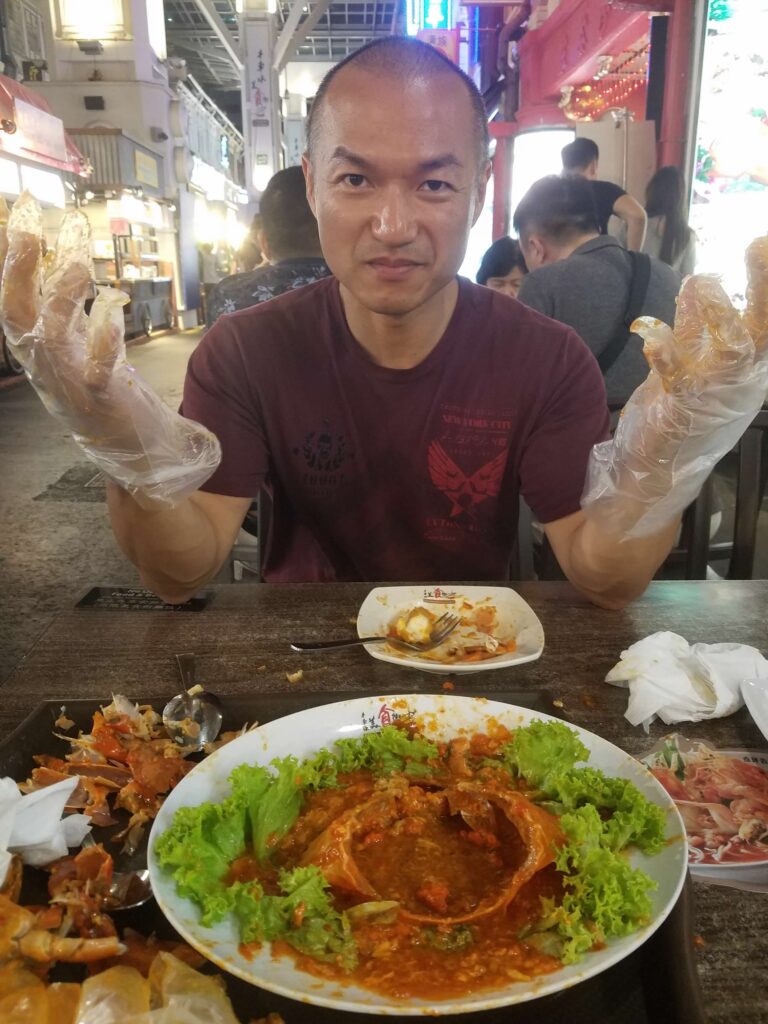
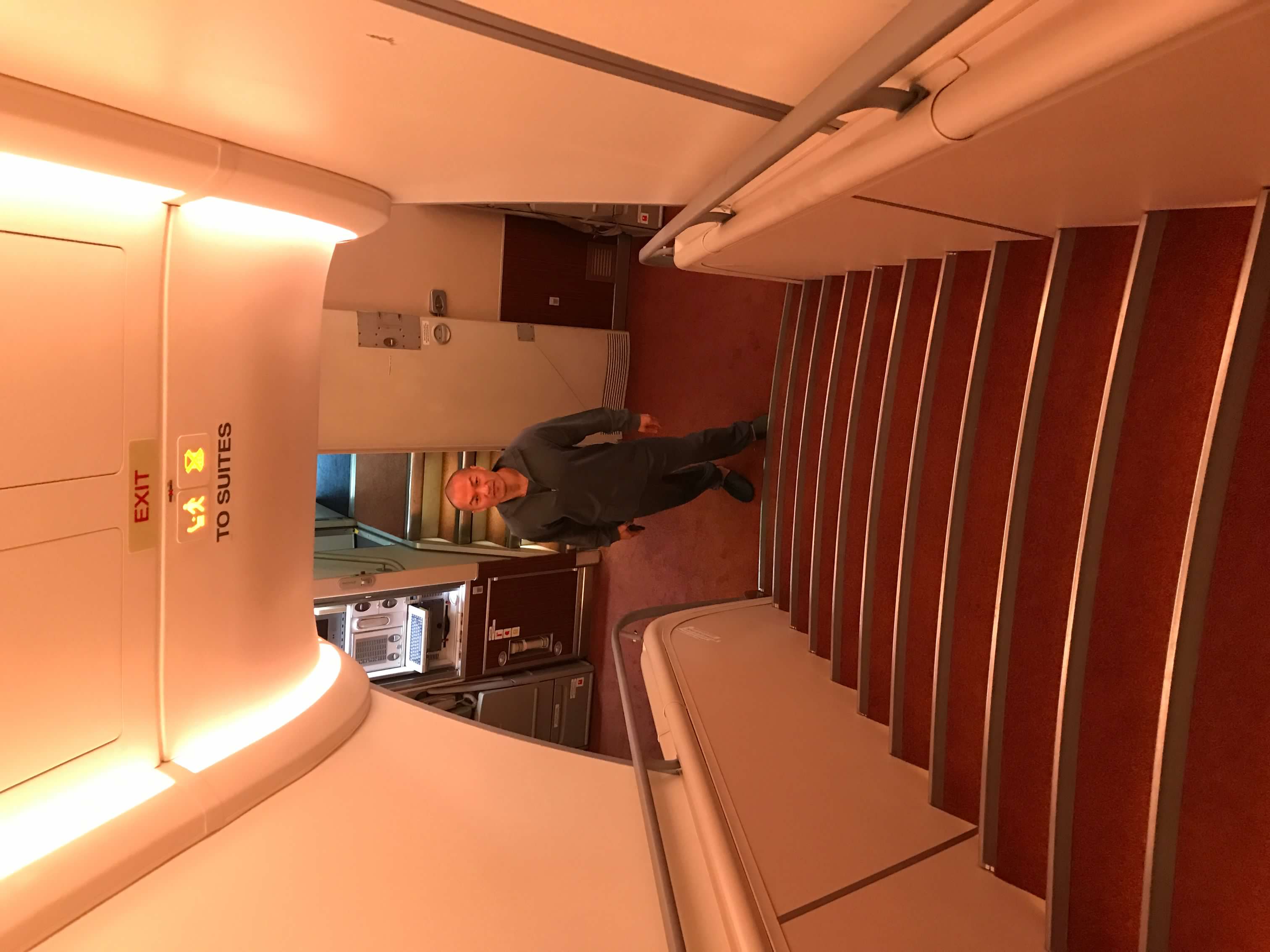
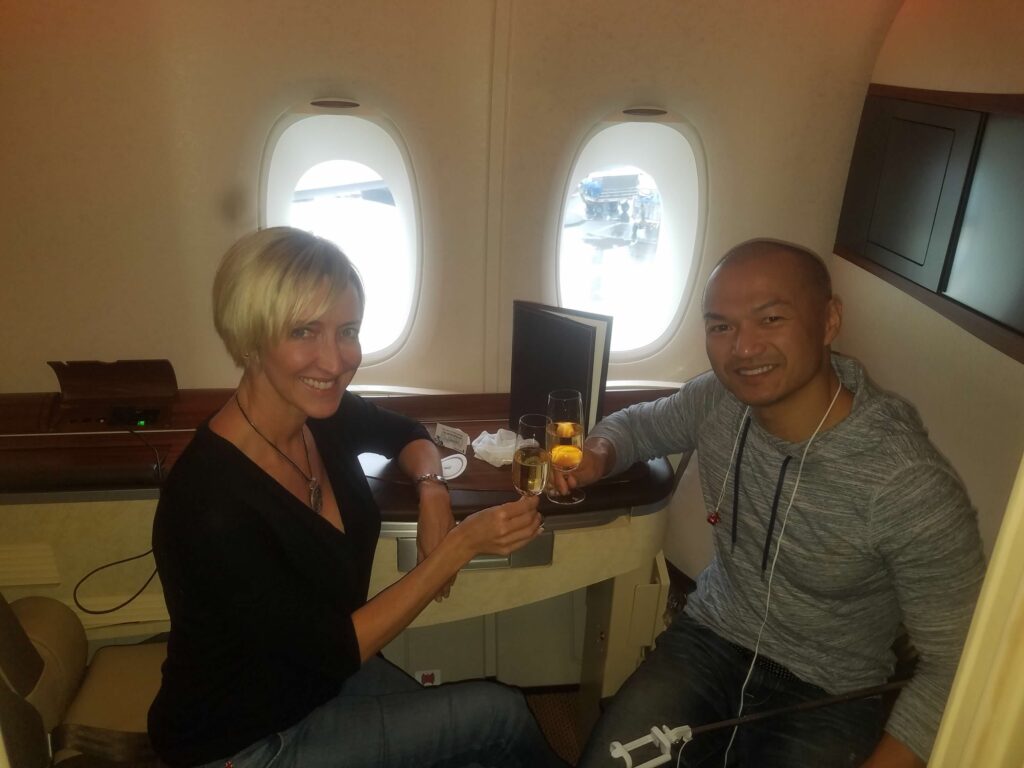
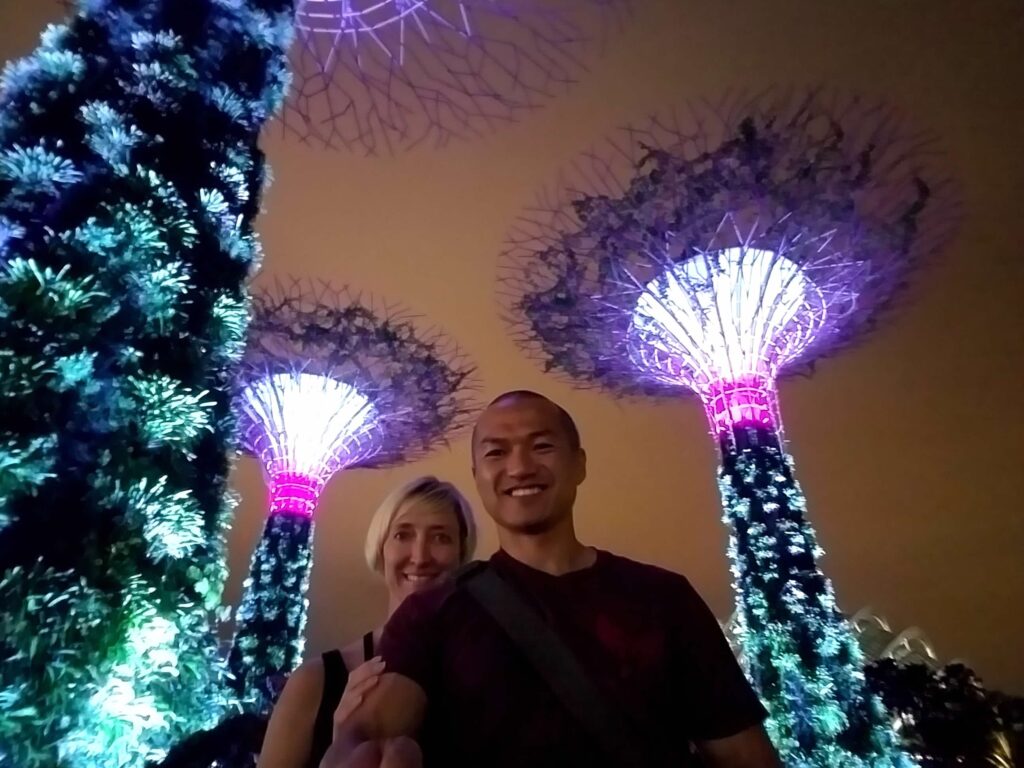
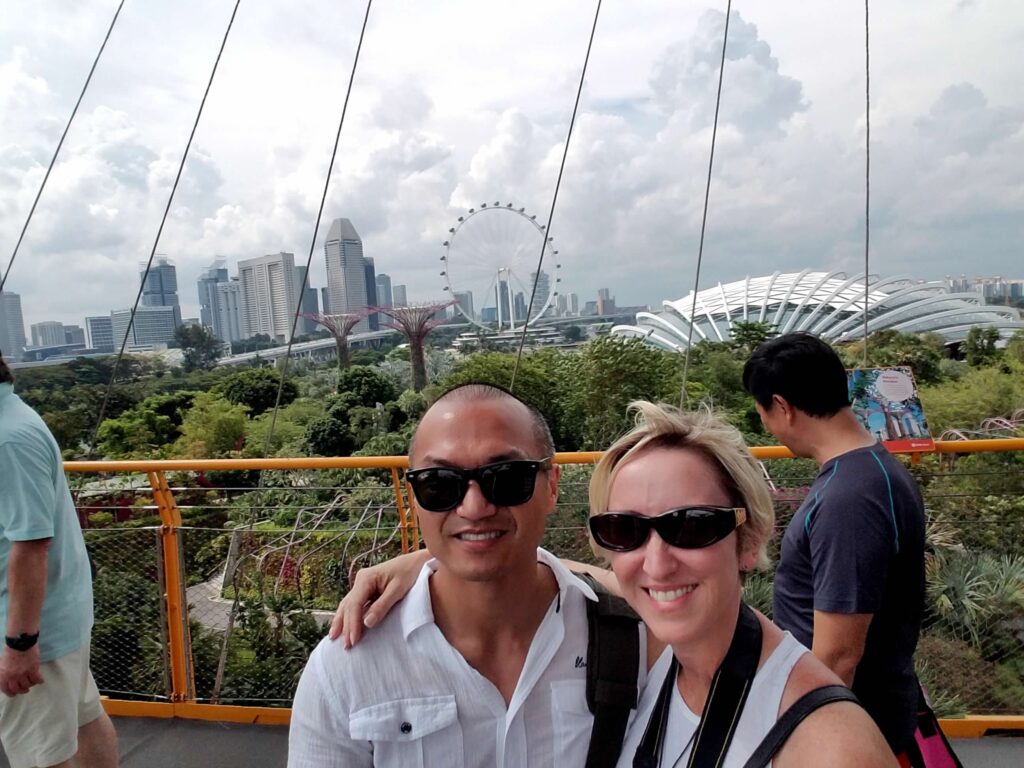
A Taste of Tokyo
But alas, they cannot all be wins! Tokyo has two major international airports. We flew into Haneda airport (HND) and out of Narita airport (NRT). If you need to travel between the two, it is quite easy by train, bus, or car. Takes about 1.5-2 hours. Here is a guide to transferring between the two. We had about 9 hours, so we arranged for a tour.
Ralph, our not-so-Japanese tour guide, picked us up in his dirty van and began our tour with excuses for why we could do none of the activities we signed up for… sumo wrestling practice was canceled, the fish market had no parking, etc etc. Then, he continued by getting lost on his way out of the airport.
Despite being in one of the strangest, most unique cities in the world, our tour was terrible. Ralph took us to Tokyo Tower, which was basically a lookout with a gift shop, drove us by the Hilton (ooh, aah), and then to what I think was a Toyota Museum. We sat in Tokyo traffic for a while, and he was not listening to our requests or doing what we asked. Eventually, we had him drop us off at Shibuya. If you aren’t familiar with Tokyo, Shibuya is part of Tokyo with the world’s busiest crossing area known as a “scramble crossing,” where, when the lights change, the sea of people (up to 3000 at a time) crosses left, right, and diagonal.
We made the best of it and still had fun observing the strangely outfitted teenagers and catching a few Pokemon. We had some delicious sushi and visited a couple of arcades before Ralph picked us up for the airport.
The End
What an epic journey! Message me below if you have questions or comments about our trip. Are you planning to visit Southeast Asia, particularly Vietnam, Thailand, or Singapore? Let me know!
Thanks for reading! What trip should I post about next? Botswana? Japan? Danube River cruise to Christmas Markets in Germany, Austria, Czechia, and Hungary?

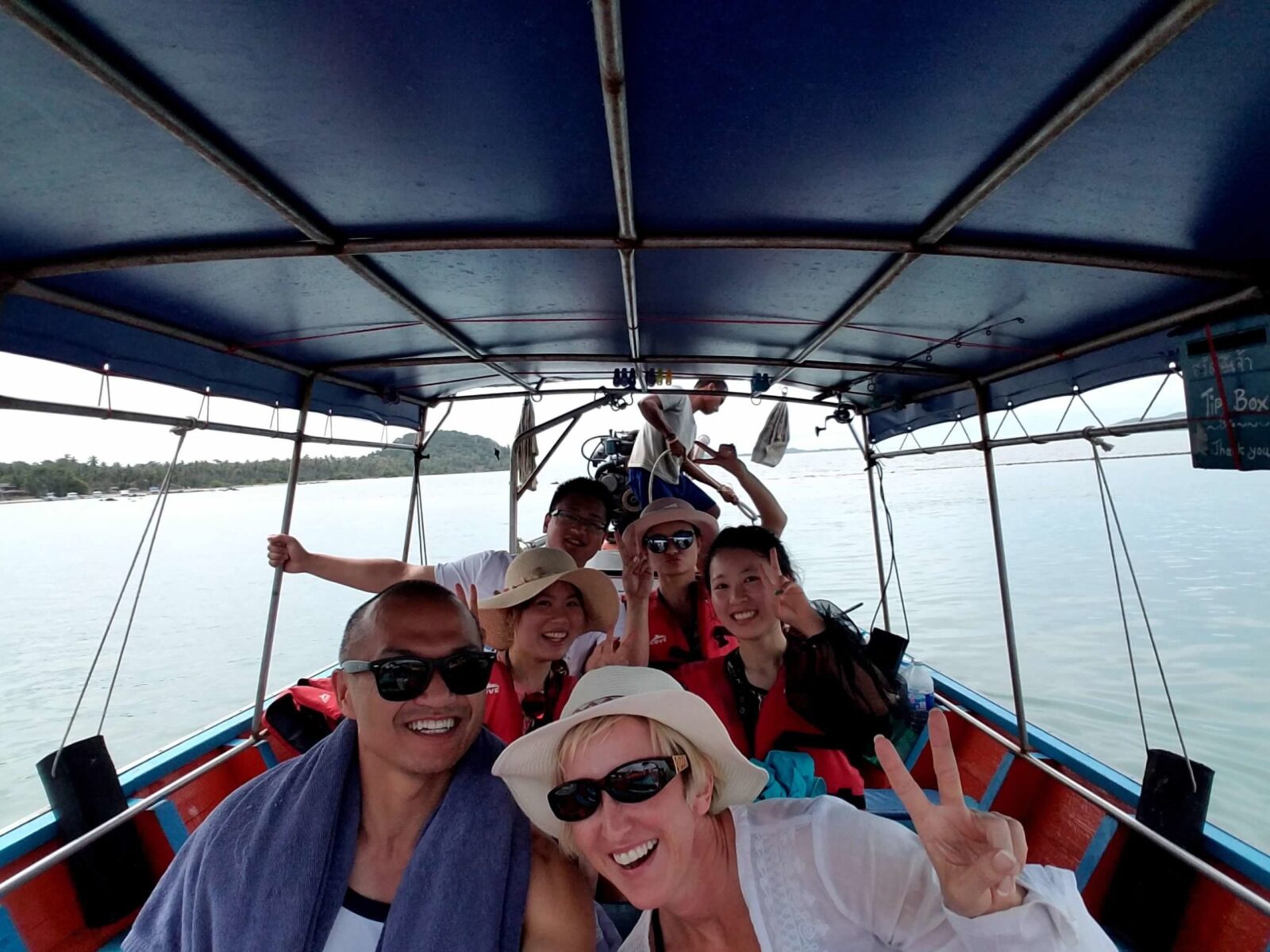
Beautiful place…looks like you sampled a wide variety of the quisine and the culture and natural beauty of this area of the world…not exactly South Carolina, eh, Jennifer?
Beautiful place…looks like you sampled a wide variety of the quisine and the culture and natural beauty of this area of the world…not exactly South Carolina, eh, Jennifer?